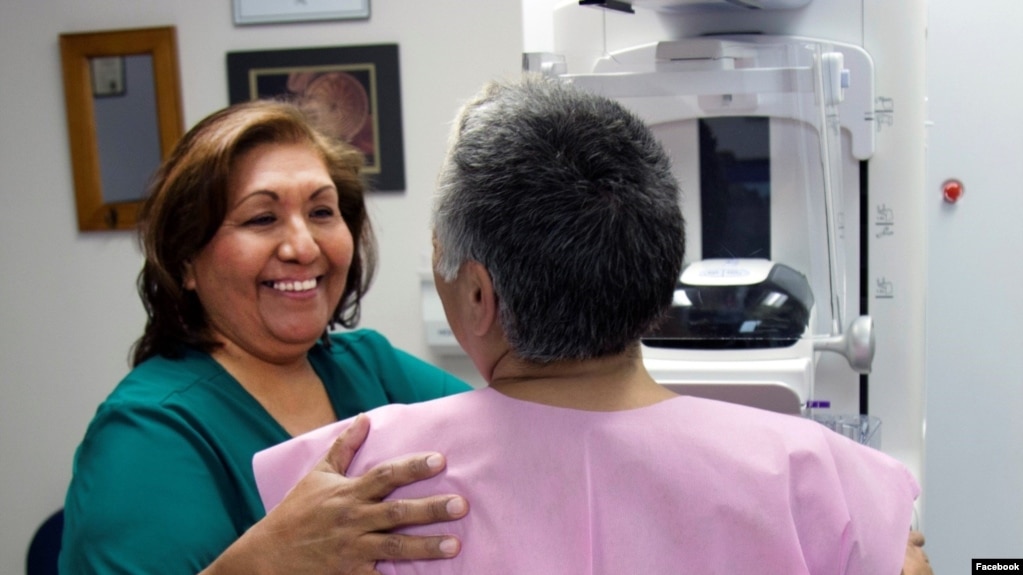
WASHINGTON — Cathy Ute knew something was wrong.
“I couldn’t eat and I hurt all over,” said Ute, a member of the Eastern Shoshone tribe from the Wind River Indian Reservation in Fort Washakie, Wyoming. “I was so tired all the time.”
Between 2014 and 2016, Ute made 22 visits to the Indian Health Service’s Fort Washakie Health Center, one of two clinics serving a reservation population of nearly 11,000. Each time, her doctor diagnosed her with acid reflux.
“And he would give me these little antacid tablets and say, ‘It’s probably just stress,’” Ute said.
Her doctor finally scheduled her for a computed tomography (CT) scan.
“And then he called and said, ‘You’ve got a big mass in your uterus,’” she said, adding, “And I didn’t even know what a mass was.”
Funding shortfalls
Linda Burhansstipanov, a member of the Cherokee Nation of Oklahoma, is the founder and director of Native American Cancer Research (NACR), a community-based nonprofit in Pine, Colorado, that works to reduce cancer incidence and increase survival among American Indians and Alaska Natives (AI/ANs).
She said Ute’s story isn’t surprising.
“This is, unfortunately, the norm in many areas of Indian Country.”
According to the U.S. Centers for Disease Control, AI/AN communities in general have lower rates of cancer. But in certain regions, AI/AN cancer incidence and death rates from certain cancers — gallbladder, stomach, liver and kidney, for example — exceed those in the general population.
Early diagnosis, intervention critical for survival
“For most cancers, if you wait six months, your cancer has progressed to the next stage,” she said. “And every time you elevate to a higher stage, you are looking at up to three times the cost of care and a bigger impact on your quality and quantity of life.”
The Indian Health Service (IHS), an agency of the U.S. Health and Human Services Department, is responsible for delivering health care to more than 2 million AI/ANs through a network of 600 hospitals and clinics on or near reservations.
But the chronically underfunded agency can’t meet all the needs for services such as early cancer screening. In cases where illness presents a serious threat to “life, limb and senses,” IHS facilities may contract with outside hospitals and specialists through what’s called the Purchased/Referred Care (PRC) program.
But not all patients qualify. And as the Government Accounting Office has noted, even when they do qualify, facilities may deny requests or put them off until funds become available.
A review committee eventually approved sending Ute to a cancer facility in Salt Lake City, Utah, 500 kilometers and a seven-hour drive away. Like many rural Native Americans, Ute didn’t own a car.
“We borrowed my niece’s car. I think there was only $62 in my savings account, and we didn’t have a credit card, so we couldn’t stay in a motel,” she said. “We had to turn around and drive back home that same day.”
‘Angel’ navigators
“An important solution to these challenges is what our community calls Native Sisters or Brothers — native patient navigators (NPNs),” Burhansstipanov said.
NPNs are trained to help patients navigate the complexities of cancer treatment.
“Because these navigators come from inside tribal communities, they know how difficult it is to get a referral,” she said. “So, they don’t wait for IHS. They go through other systems and get the person into care more quickly.”
NPNs have access to programs that help pay for transportation and lodging. They educate patients on what to expect from treatment. They can arrange for translators and help instruct caregivers about patients’ cultural and spiritual needs. And because AI/ANs tend to have more long-term side effects from cancer treatment than other population groups, NPNs help survivors arrange for much-needed aftercare.
While patient navigation has been around for decades, it’s still relatively new to Indian Country.
“Nationwide, out of 574 tribal nations, probably only 30 have trained NPNs,” Burhansstipanov said. Her group is working to change that, offering training sessions four times a year.
‘One of the lucky ones’
In early November 2017, Ute underwent surgery to remove her tumor and was sent home 10 days later.
“I had 89 metal stitches in my body,” she said. “My husband and niece had to give me a shot every day for a month so I wouldn’t get blood clots.”
Resulting complications forced her to return to Utah several times for additional surgeries. It was months before she was deemed healthy enough to start chemotherapy.
Fortunately, IHS and other insurance covered her treatment.
But in most other ways, Ute said she got little tribal support.
Burhansstipanov said NACR has, in the past, trained two different patient navigators at Wind River.
“And within two months, they were all working in different jobs, or they were no longer working for the tribe at all,” she said. “They’re very dedicated, but the tribe just didn’t have the funds to support them. And this isn’t unique to Wind River.”
Today, Ute’s cancer is in remission.
“I still have the after-effects of chemo, like muscle pain, and I can’t remember some things. But I’m one of the lucky ones. I’m still here. But I feel so sorry for all those ladies who aren’t.”
Source: VOA
